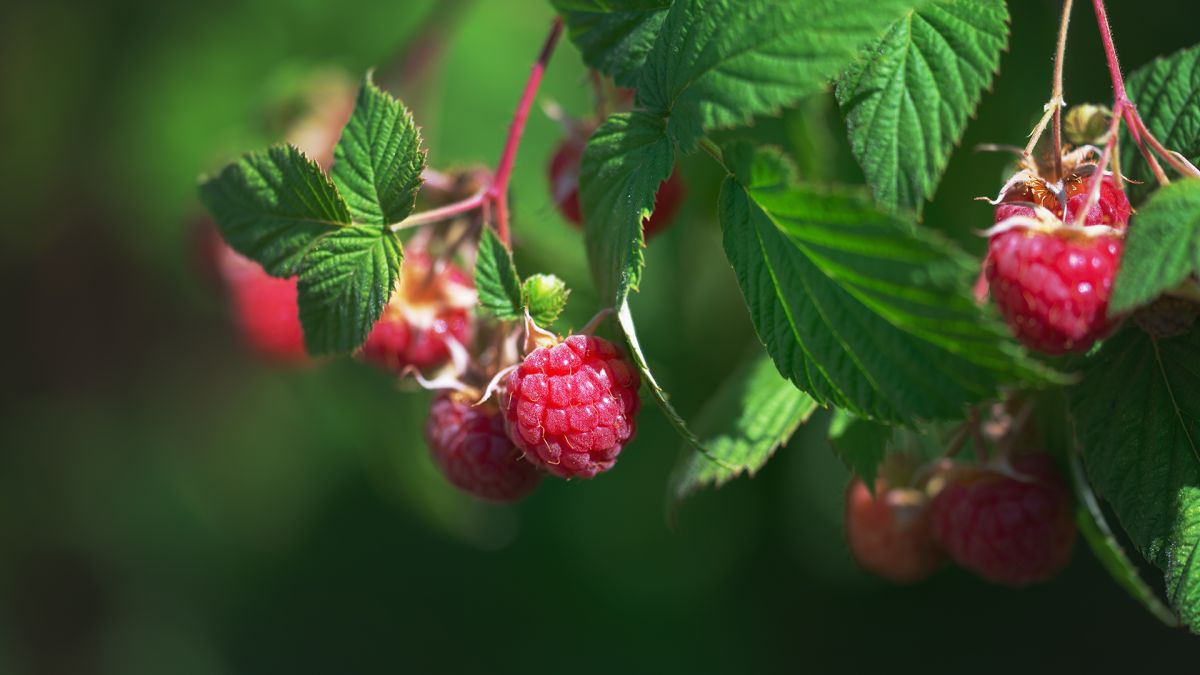Sprouting raspberry seeds in winter takes a little effort and patience but it can really be worth it because it allows you to grow different varieties of raspberries that are sometimes not available in the nurseries.
Some seeds are shipped from China and it’s sometimes difficult to figure that out before you buy. Seeds from China are known to have a very low germination rate compared to the seeds that are produced in the USA, Canada or the UK. If you choose to buy seeds online, make sure they ship from one of these countries.
I’ve found that DH Seeds on Amazon USA is a good one and ships from within the USA and have a good germination rate. Most local nurseries are usually good for supplying high quality seeds too.
Supplies
The supplies you’ll need to sprout your raspberry seeds in winter are:
– a small shallow plastic tray
– bowl to mix the soil
– a plastic bag that will completely cover the tray and close
– raspberry seeds
– 3″ pots
– seed starting mix
– thermometer
– dedicated & undisturbed fridge space
10 Steps to Sprout Raspberry Seeds in Winter
Once you have these items gathered together, then you can start in late summer.
Step 1: Soak the seeds for a day in luke warm water on the tray. Use just enough water to cover the seeds completely. Leave the tray out on the counter for 24 hours.
Step 2: Make sure your thermometer is calibrated properly then check the fridge temperature, set it to stay between 34° and 40° F. (Most fridges are in this range anyway)
Step 3: After 24 hours, pour the water and seeds out into a coffee filter or through a cheese cloth. This is so you don’t lose the very small seeds down the drain.
Step 4: Put some of the seed starting mix into the bowl and add enough water to make the soil slightly squishy like a sponge but not soaking wet at the same time.
Step 5: Fill your 3″ pots to within a fingers depth below the top of the pot edge with the soil. Pat it down a little.
Step 6: Place 4 of the raspberry seeds on the soil separate from each other, use a toothpick or wooden skewer to maneuver the seeds gently.
Step 7: Cover the seeds with a very thin layer of additional soil.
Step 8: Place your little pots on the tray and pull the plastic bag over it and close the bag with a bag clip or twist tie. Make sure none of the pots tip over.
Important Step: The tray needs to be placed in an area of a fridge where it won’t be moved or disturbed at all. This is why it’s ideal to have a spare fridge in the garage or basement that is separate from the main food fridge. It can be as simple as picking up a small bar fridge and setting it out of the way.
Step 9: Keep an eye on your little babies periodically. Add a tiny bit of water if the pots seem dry but it shouldn’t need much. This is the part where patience comes in. It’ll take 3-4 months for the seedlings to emerge from the soil.
Step 10: Once they pop through the soil surface take them out of the fridge and place them in a warm, sheltered sunny spot.
Let them grow for a month or two then clip out the two seedlings that are the weakest and leave the two strongest sprouts to grow in the pot.
Once the weather is consistently warm and the threat of frost and winter has passed then you are free to plant your spouts outside in the garden. Let them grow without interference or pruning for the entire spring and summer season. They’ll go dormant for their first winter outside.
Then in the spring they will produce a new set of young canes. Leave them all intact along with last years growth. The plant will produce fruit in their second year but on the first set of canes that grew last year.
Good luck and may you harvest many beautiful and delicious raspberries!
Featured Image: homesandgardens.com

